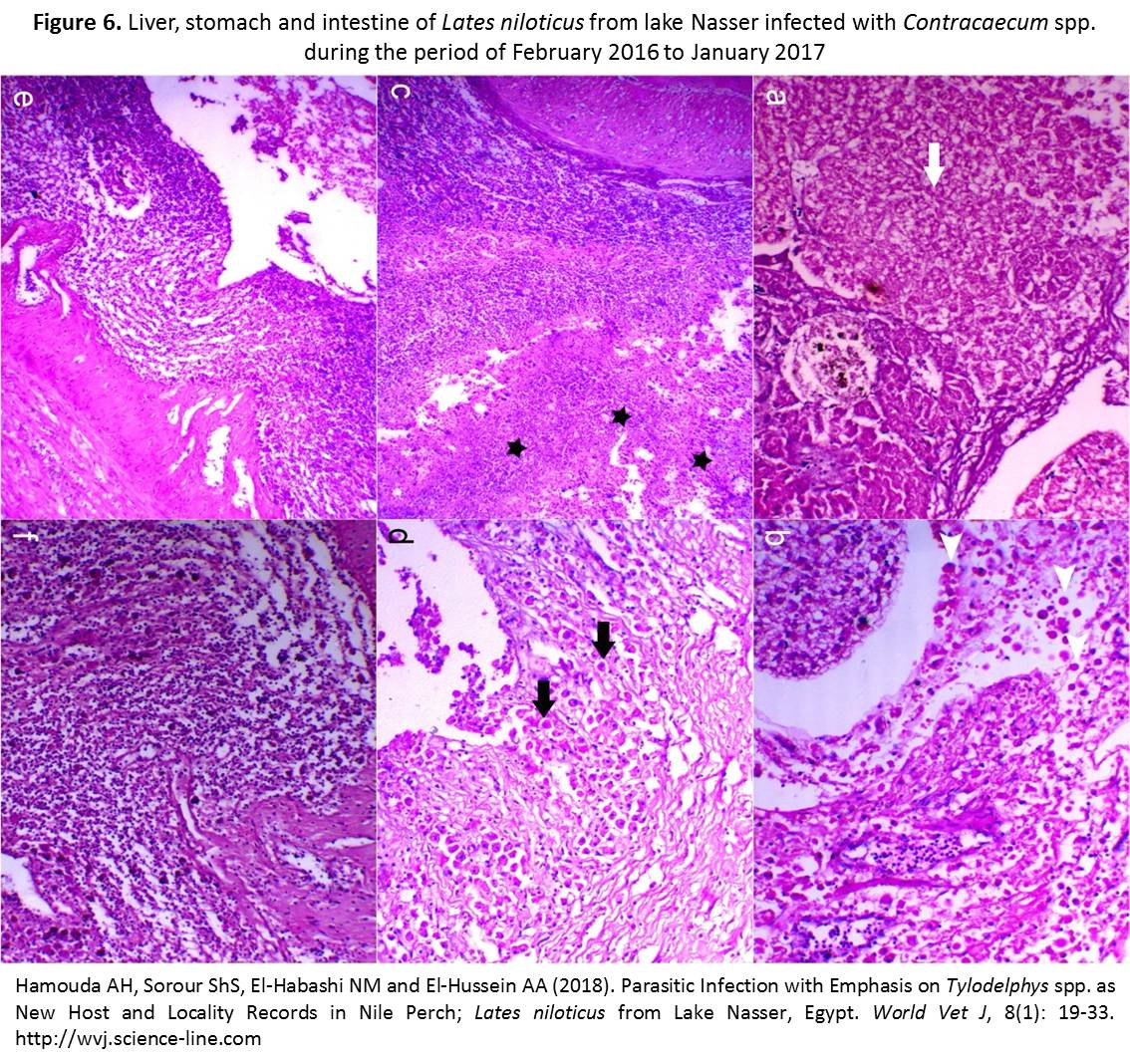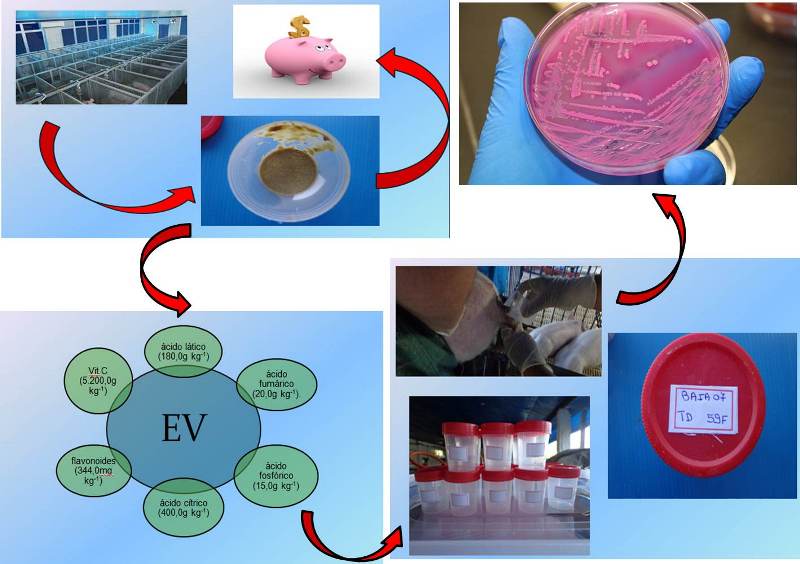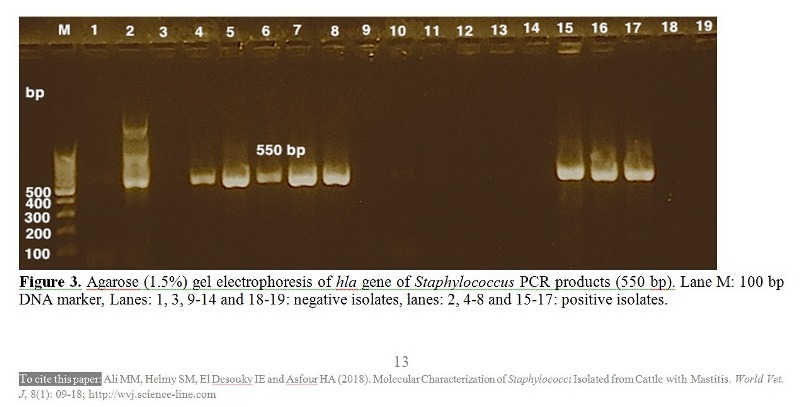Previous issue | Next issue | Archive
Volume 8 (1); March 25, 2018 [Booklet]
Performance and Microbiological Profiles of Piglets Fed with Diets Enriched with Bio-flavonoids and Ascorbic Acid.
de Oliveira MF, Rigon Rossi CA, Shardong Lucca M, Soares M, de Oliveira V, Dornelles J, de Lima Schlösser LM and Guilherme Gräf C.
World Vet. J. 8(1): 01-08, 2018; pii:S232245681800001-8
ABSTRACT
The objective of this study was to evaluate the performance and microbiological profile of 40 piglets (females and males) in the nursery phase. The experimental design was completely randomized, with four treatments, five replicates and sex as a blocking factor. The treatments were distributed in: T1 (control); T2 (Plant Extract as PE, 500 ppm); T3 (Amoxicillin as A, 20 mg kg-1) and T4 (PE+A, 500 ppm + 20 mg kg-1). There was no influence (P > 0.01), between treatments for both the initial and the final weight and average daily gain, but the control group males had an average daily feed intake of 1.8% or higher (P < 0.01) compared to other treatments. The total count control bacterial colonies were 35.9%, 70.9 % and 63.8 % higher (P < 0.01) to treatment with A, PE+A and PE, respectively. For MacConkey test, the treated group A was 88.44 %, 91.78 % and 56.50 % higher (P < 0.01) compared to PE+A, PE and control, respectively. The antibiogram of 48 stool samples had shown that Amoxicillin disk were at 85.7 %, 72.7 %, 44.5 % and 100 % resistant in the control treatments, PE, A and PE+A respectively. The bioflavonoids and ascorbic acid and the interaction with amoxicillin did not alter the performance of pigs in the nursery phase but had reduced the presence of bacterial colonies.
Key words: Amoxicillin, Bacterial colonies, E. coli, Nursery, Plant extract
[Full text-PDF] [MOBI] [ePUB] [AZW3] [XML] [Import into EndNote] [Citations on Google Scholar]
Molecular Characterization of Staphylococci Isolated from Cattle with Mastitis.
Ali MM, Helmy SM, El Desouky IE and Asfour HA.
World Vet. J. 8(1): 09-18, 2018; pii:S232245681800002-8
ABSTRACT
This study was carried out in order to investigate the occurrence of some virulence genes of Staphylococci isolated from cattle with mastitis. A total number of 133 milk samples (45 from clinical mastitis and 88 from subclinical mastitis) were collected from dairy cattle in Kafr El-Sheikh and EL Gharbia Governorates, Egypt. The samples were examined for the presence of Staphylococci by classical bacteriological methods and were further characterized geno-typically. A total of 41 Staphylococcus isolates were recovered from cattle with mastitis with an incidence of 30.8%. Among the isolates, 21(15.8%) of S. aureus [6 from clinical mastitis (13.3%) and 15 from subclinical mastitis (17%)] and 20 (15%) isolates of CNS [8 from clinical mastitis (17.7%) and 12 from subclinical mastitis (13.6%)] were identified phenotypically. All isolates were screened for the detection of binding protein A (spa-X), haemolysine type A (hla), Haemolysine type B (hlb), and toxic shock syndrome (tsst-1) by PCR. The obtained results revealed that the spa Xgene was detected in all Staphylococcus isolates recovered from subclinical mastitis while in clinical mastitis was detected with an incidence of 42.9%. Haemolysine type A was detected in clinical and subclinical mastitis with an incidence of 71.4% and 70% respectively, while haemolysine type B was detected in clinical and subclinical mastitis with an incidence of 28.5% and 40% respectively. Toxic shock syndrome was not detected in any of the isolates. The data in the study provided an overview on the distribution of some virulence genes related to Staphylococci isolated from cattle with mastitis in Egypt.
Key words: Cattle, Mastitis, Staphylococci, Virulence gene, PCR
[Full text-PDF] [MOBI] [ePUB] [AZW3] [XML] [Import into EndNote] [Citations on Google Scholar]

Research Paper
Parasitic Infection with Emphasis on Tylodelphys spp. as New Host and Locality Records in Nile Perch; Lates niloticus from Lake Nasser, Egypt.
Hamouda AH, Sorour ShS, El-Habashi NM and El-Hussein AA.
World Vet. J. 8(1): 19-33, 2018; pii:S232245681800003-8
ABSTRACT
A total number of 200 Lates niloticus were collected alive from several and various localities at Lake Nasser in Aswan governorate, to investigate the prevailing parasites that infect this fish species. All the examined fish were positive for one or more parasites, three trematodes of two families were identified: Diplectanum simile, Diplectanum lacustris and Tylodelphys spp. (recorded for the first time in Lates niloticus representing new host and locality records), two nematodes of two families: Philometra ovata and L3 larvae of Contracaecum spp.(has zoonotic importance), one acanthocephalan parasite: Rhadinorhynchus niloticus, two crustaceans parasites of one family: Ergasilus kandti and Ergasilus latus, while no cestodal infections were recorded at all. The prevalence of trematodes was at 95% meanwhile the nematodes were at 100% in addition to the acanthocephalan parasite was at 24.5% as well, crustaceans parasites were at 69.5%. This study evaluated clinical signs, postmortem examinations, parasitological examinations, seasonal prevalence and histopathological investigations of infected fish in addition to the relation between fish age and parasitism was also described. This study builds on our current understanding of different parasites infecting the wild Lates niloticus and provides novel information on the patterns of the isolated parasites and also serves to reassure the consumers that the musculature (the edible part) of the fish was free from any parasitic infections and safe for human consumption provided that the fish must be eviscerated as soon as possible after being caught and adequately cooked.
Key words: Lates niloticus, Nile perch, Tylodelphys spp., Philometra ovata, Pathology, Lake Nasser
[Full text-PDF] [MOBI] [ePUB] [AZW3] [XML] [Import into EndNote] [Citations on Google Scholar]
Previous issue | Next issue | Archive
![]() This work is licensed under a Creative Commons Attribution 4.0 International License (CC BY 4.0).
This work is licensed under a Creative Commons Attribution 4.0 International License (CC BY 4.0).






